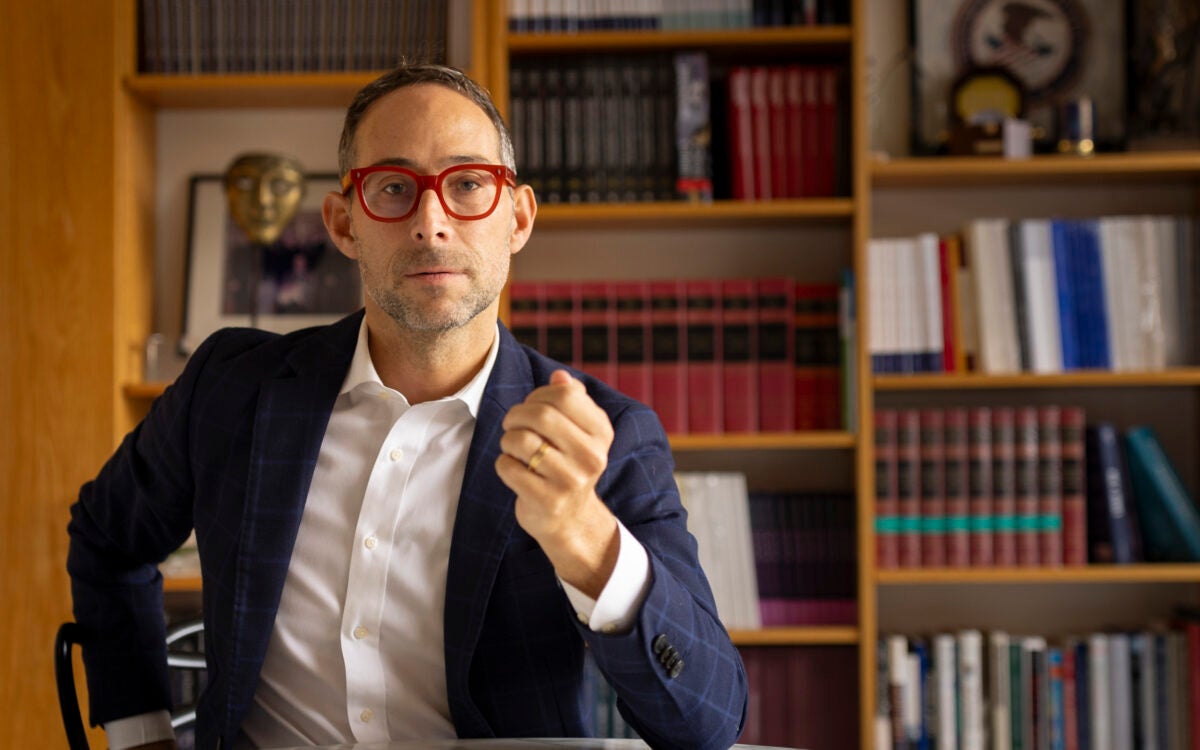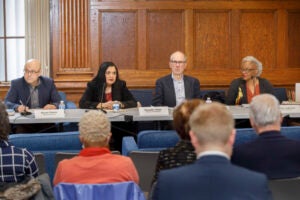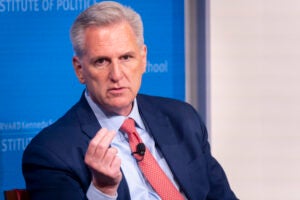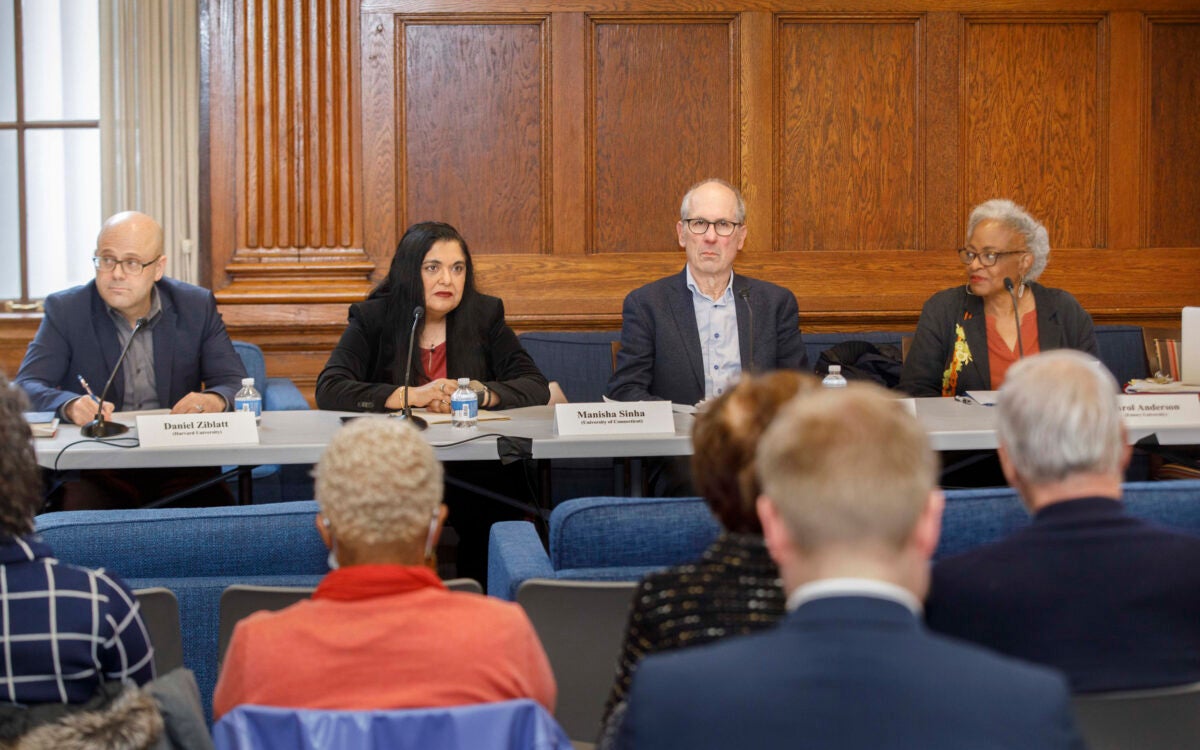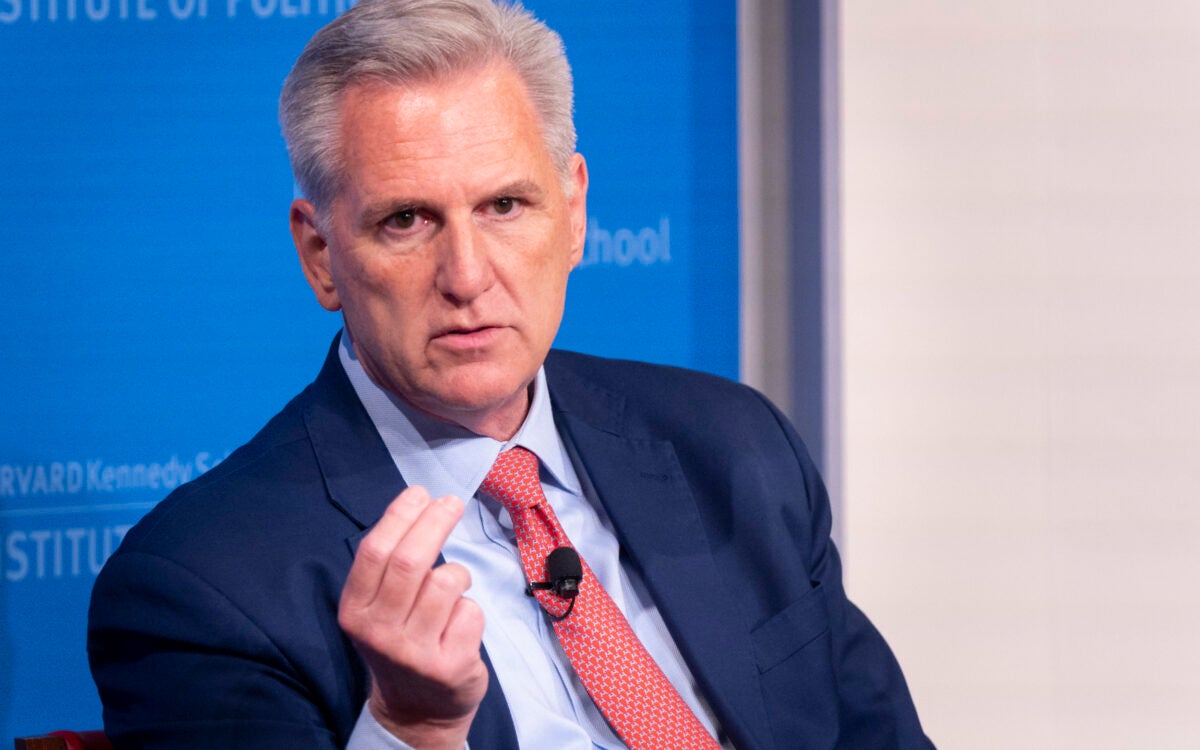Young scholars show findings at HGSE Student Research Conference
In a basement classroom in Larsen Hall on Friday (Feb. 23), there was everything young learners need: chalkboards, a screen, bright lights, sturdy chairs – and good teachers. In this case, four good teachers – all of them Ed.M. students at the Harvard Graduate School of Education (HGSE).
The four were among 230 young scholars from universities across North America at HGSE’s daylong Student Research Conference. The annual event – in its 12th year, and the only one of its kind in the country – provides a way for first-time education researchers to mingle with their peers, practice presentation skills, and get a sense of emerging scholarship.
During the morning, student scholars in 27 separate classroom settings summarized their research findings, followed by questions from audience members. “It’s a big moment,” said Lorielle E. Mallue, one of the four young master’s degree students gathered in the Larsen Hall classroom. “Everything I said today took almost a semester to work up.”
Presenting to her peers in a nonjudgmental setting “becomes celebratory,” said the onetime filmmaker – and is a good way to prepare for the postgraduate world of scholarly conferences. “It’s not as anxiety-inducing as other environments.”
During the lunch hour, 42 “poster presentations” were on display at Gutman Library. Students stood by to defend and explain these picture-and-text outlines of their research.
In the afternoon, the conference wrapped up with 22 separate panels. As young researchers wove in and out of audiences, faculty and students discussed issues germane to the modern classroom, including technology, civic engagement, literacy, social risk, and charter schools.
In the morning classroom sessions, presentations were a brisk seven minutes each.
Edward P. Clapp talked about his Soul project, which for eight years has invited people of all ages in 50 countries to draw what their soul looks like. In the classroom, this intimate art assignment (go to http://www.drawyoursoul.org) might inspire cross-cultural discussions of the afterlife, he said. Or simply give students time to reflect on “something as elemental” as the soul.
Talya Dornbush, a researcher interested in the origins of innovation, invited listeners to imagine a crossroads in a large field. Home is behind, a beach on one side, a desert on another, and a city is ahead. Students can use the image to explore the mix of critical analysis, creative thinking, reflection, and action it takes to get to a destination (in this case, a mountain in the distance).
Dornbush said an art-based problem like this encouraged students “to think about what is possible.”
Emily Funkhouser outlined a study she did at a New York City museum. With gallery viewers increasingly plugged into their iPods, she wondered, how does a “sound track” alter the experience of a painting? “There’s no research out there saying what that does,” said Funkhouser.
Listening to music, she found, intensifies a listener’s engagement with a painting. The subjects tuned into her custom-made instrumental sound track paid more attention to the art – and wrote and talked more about it later – than the no-music control group.
Mallue, who worked for six years in film industry in Los Angeles before coming to Harvard, devised a scheme for diagramming the creative process. Using the chalkboard, she sketched out creation’s intertwining steps, which may, she said, happen out of order, or even get skipped: research, inspiration, commencement, critique, revision, and cessation.
“The journey of these stages,” said Mallue, “happens each time you sit down to work.” One lesson for teachers, she said, is that hurrying students through the creative process can make knowledge “inert” – disconnected and hard to remember.
Upstairs in Gutman Library, Ed.M. student Marie Owens, a member of the HGSE conference training committee, got ready for the afternoon rush of events. The Student Research Conference gives the scholars of the future “a training ground,” along with some academic perspective, she said. “It’s a great way to open the lid on what’s going on in the education schools.”
